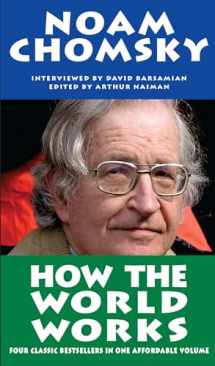
How the World Works (Real Story (Soft Skull Press))
Book details
Summary
Description
According to The New York Times, Noam Chomsky is arguably the most important intellectual alive.” But he isn’t easy to read . . . or at least he wasn’t until these books came along. Made up of intensively edited speeches and interviews, they offer something not found anywhere else: pure Chomsky, with every dazzling idea and penetrating insight intact, delivered in clear, accessible, reader-friendly prose.
Published as four short books in the famous Real Story seriesWhat Uncle Sam Really Wants; The Prosperous Few and the Restless Many; Secrets, Lies and Democracy; and The Common Goodthey’ve collectively sold almost 600,000 copies.
And they continue to sell year after year after year because Chomsky’s ideas become, if anything, more relevant as time goes by. For example, twenty years ago he pointed out that in 1970, about 90% of international capital was used for trade and long-term investmentmore or less productive thingsand 10% for speculation. By 1990, those figures had reversed.” As we know, speculation continued to increase exponentially. We’re paying the price now for not heeding him them.


We would LOVE it if you could help us and other readers by reviewing the book
Book review



